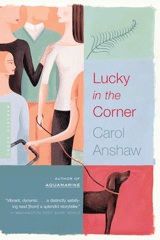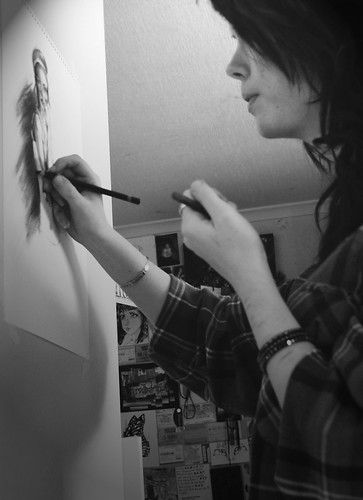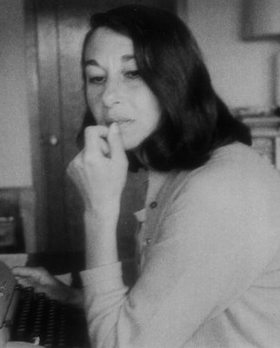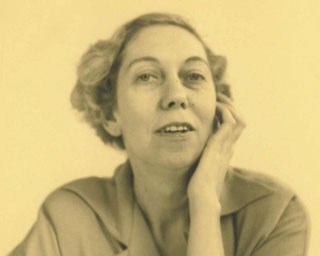 How do you remember the 80s? Depending on your age (and I’m not asking), it might have been a rite of passage filled with brooding music and unfortunate clothing choices. Or maybe it was a time of perceived invincibility fueled by drug experimentation, as it is for the characters in Carol Anshaw’s latest, Carry the One (Simon & Schuster). The novel provides a compelling psychological examination of lives altered by a tragic accident.
How do you remember the 80s? Depending on your age (and I’m not asking), it might have been a rite of passage filled with brooding music and unfortunate clothing choices. Or maybe it was a time of perceived invincibility fueled by drug experimentation, as it is for the characters in Carol Anshaw’s latest, Carry the One (Simon & Schuster). The novel provides a compelling psychological examination of lives altered by a tragic accident.
The story begins in 1983, at an unpretentious Wisconsin farmhouse wedding. Carmen Kenney, the pregnant bride, waits impatiently for her guests to leave, sobered by the disconcerting realization she doesn’t really know her husband, Matt. She wearily says goodbye to a car filled with passengers: her sister Alice; her new sister-in-law Maude; Tom, an acquaintance; her brother Nick and his girlfriend, Olivia, the driver.
Carmen asks Olivia if she’s all right to drive. Olivia, who has spent the day ingesting various drugs says yes. And maybe she means it. In the backseat, Alice pays more attention to Maude’s advances than to Olivia’s capabilities as a driver. So Alice doesn’t notice what’s happened and sees the child only when their eyes briefly meet as the girl flies over the car’s hood.
She looked to be about nine or ten, although she had the adult features of kids from rougher places. She was quite beautiful, with a mop of hair bleached white by half a summer, green eyes staring at absolutely nothing.
The death of the child, Casey Redman, and what it means to those left behind forms the foundation of Anshaw’s perceptive novel. The protagonists struggle with personal dilemmas, both of their own making and driven by their environment as they grapple with guilt and residual damage. Anshaw shows the reader occasional glimpses before the accident, but the majority of the novel focuses on its aftermath: this trauma proves to be the defining moment of their lives.
While Alice and Maude’s relationship flickers on and off—testing the sustainability of romance borne of tragedy—Alice seeks to add another element to Casey’s short life. Through art, she creates tangible proof that Casey existed in a series of paintings about the child. Alice’s struggle with the accident feels at times enviable and brave, and at others like a painful loop she cannot escape.
Alice was beginning to see the terms of these paintings. She would wait for them to arrive and then paint them, like the clicking of a shutter, making snapshots out of oil and canvas. This was the central point of her art now, to record the girl’s unlived life.
In this regard, Alice submerges her own life in that liminal moment when Casey’s ended.
Before the accident, Nick had thought he would only casually date Olivia, yet the tragedy forges a defining link. They mark time together, united in a painful shared past. Carmen hides her remorse, but wonders if the child’s death cast a pall over her entire marriage, “played out under a long stretch of shadow it couldn’t outrun.” Even her son, Gabriel, born after Casey’s death, reminds the reader that fate denied the Redmans the pleasure of watching their daughter grow up.
The novel also casts the siblings as children, living in the pall of parental dysfunction. Even in adulthood, Alice, Carmen, and Nick must remain united against their parents—Horace the bully and Loretta the accomplice. Anshaw adroitly explores the relationship between the Kenneys’ familial background and who they become in the wake of trauma. Their ingrained roles, likely formed before they reached Casey’s age, remain a strong force in the novel, even though the moment that defines them—the accident—occurs during adulthood. Among the three siblings, one craves parental affection, one shuns it, and one has created a hell so complete that Mom and Dad don’t factor into the equation.
Anshaw dips into the minds of Alice, Carmen, and Nick as they attempt to make sense of what happened and comprehend their roles. In a novel so concerned with the internal fault lines of guilt and grief, this omniscience feels perfect. The relatively long expanse of time covered by Carry the One gives Anshaw space to fully explore her characters’ lives and their complex adaptations to enduring pain. The story unfolds over twenty-five years, including societal touchstones from the tenth anniversary of John Lennon’s death to the horrors of 9/11. The world carries on, even if the Kenneys remain shackled to the past.
Throughout the book, Alice and Carmen keep a wary watch over Nick, who lapses into the shadowy world of addiction. His penance of choice might be different from theirs, but he pays all the same. The sisters continue to reach out to their brother as he medicates his demons with an unwavering dedication. Scenes where Alice and Carmen try to pull Nick out of himself will resonate for anyone with an addict in the family.
Carol Anshaw’s Carry the One renders lives forever altered in the aftermath of one fateful day. The past declares itself, but the Kenney siblings prove time and again that a single event may be refracted in ways as diverse and unaccountable as the individuals it touches. Against the changing landscape of time and memory, they may falter under the weight of Casey Redman, but carry on they must.
Further Links and Resources
- At Simon & Schuster’s author page, watch a video interview with Carol Anshaw and read an excerpt from Carry the One.
- Follow Anshaw on Twitter: @carolanshaw
- This NPR story about dog books features Anshaw’s Lucky in the Corner. Learn more about her other previous novels, Seven Moves and Aquamarine, on her website.
- The author is also a painter; here are samples of Anshaw’s artwork, together with information about her Vita Sackville-West project.








